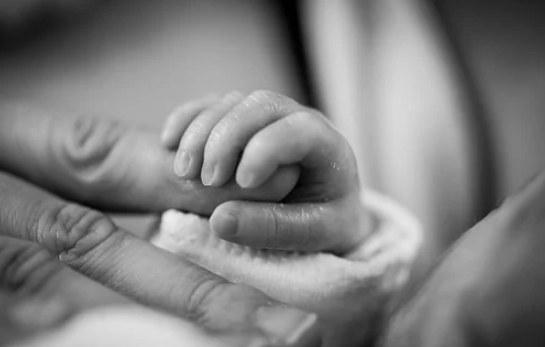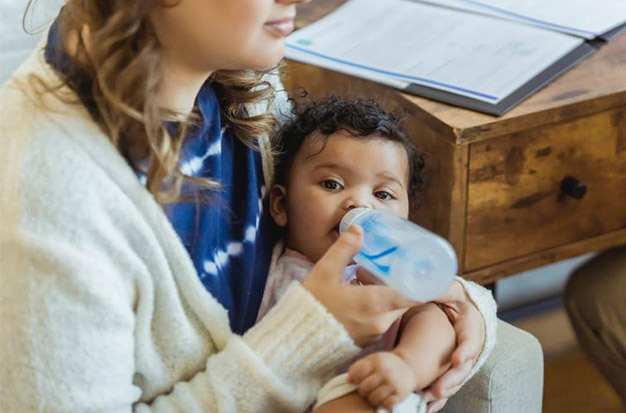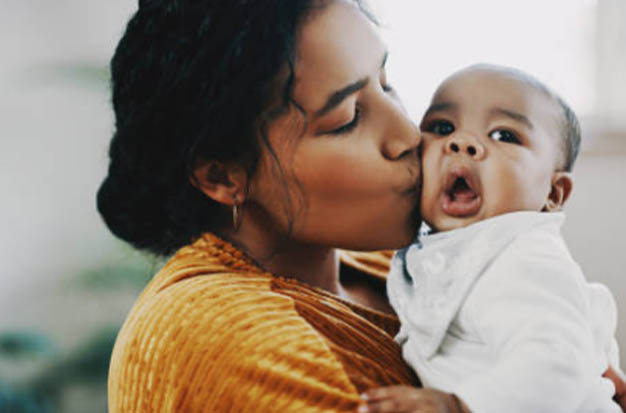Do you ever notice a baby’s hands being cold while they are sleeping? Wouldn’t it be great if our newborn babies could somehow communicate to us their needs for the most important things in life?
They cry, yes, but who is to say what the meaning of each cry is? We’re willing to bet that since you’re unsure, you’ll search extensively for the source of your baby’s discomfort so you can address it.
The same is true for your baby’s temperature. Since you can’t tell if your baby is too hot or cold by simply feeling their feet or hands, you will need to search, probe, and poke them to find out.
Is It Typical For Babies To Have Cold Hands?
So, are babies’ cold hands normal? In actuality, it is! It is normal for your child’s hands and feet to occasionally become cold because infants and newborns frequently have poor circulation.
Even though it may be warm in the room, you might be surprised to learn that your baby’s feet could start to take on a faint blue tint. This is entirely reasonable and, in general, not a cause for concern.
If your baby is too hot or too cold, on the other hand, that is something to be concerned about. Either one could possibly cause an illness or have a serious negative effect on the health of your child, like showing a baby’s fever. But you can’t tell if your baby is healthy just by feeling his or her hands and feet. Don’t touch his or her stomach or bare chest; instead, place your hand on the top of their back. Is it warm, cool, or just right?
Cold Hands And Feet
Baby body temperature cannot be accurately measured by feeling your baby’s hands and feet. Due to their immature circulatory systems, most babies will have cold hands. Most babies aren’t bothered by cool paws while they’re sleeping, despite the fact that it makes parents uncomfortable. If you are concerned that they are uncomfortable, we suggest using a sleep sack that will cover their hands, such as a Swaddlenot, or using a brand of sleepers that have the option of folding over the hands. Because babies can pull off mittens and socks and obstruct their airways, it is not advised to put them on their hands.
Feel the back of the baby’s neck when taking the temperature of the child. This is the most effective technique parents can employ without waking the infant. You want to be able to touch them and feel that their skin is the same temperature as the back of your hand—not hot or cold.
Crib Space
Even though the temperature on your main floor thermostat may say 20, the room may actually be cooler. In the winter, windows frequently draft, lowering the room’s temperature and making it challenging to stay warm. If at all possible, place cribs against interior walls to protect babies from the cold air outside. Pay attention to the bedding and mattress cover materials because plastic and nylon can be chilly for newborns to sleep on.
Check The Room Temperature
A baby’s room should be between 19 and 21 degrees at all times. According to the TOG recommendations, your baby should be sleeping in a cotton (or fleece, if it’s cold outside) and a sleep sack. “TOG” is an international unit of measurement in the textile industry. Similar to muslin, a sleep sack with a low TOG value is best for hot climates or summer weather, and a sleep sack with a TOG value of 2.5 is the warmest one you can buy (recommended for cold climates and winter weather). Avoid using loose blankets, according to Health Canada, as they may increase the risk of SIDS.
Is My Baby Too Cold?
Body surfaces that are exposed are the main source of body temperature loss in humans. This is referred to as “radiated heat” and this is the medical way of saying that exposing your skin typically results in you losing heat, according to the Mayo Clinic (source).
For infants and young children, in particular, this is true. The risk of losing heat quickly is greatest for babies in particular. This is true for a few reasons:
1. babies have a high body-surface-to-weight ratio which increases the risk of heat loss.
2. babies don’t have the skills or mental awareness to self-regulate as adults do.
Checking the hands and feet may come to mind first. In general, it’s difficult to tell if your baby is too cold by looking at their hands and feet. This is so that they can naturally carry a lower temperature since they are frequently exposed. Your baby may not be too cold if only their hands and feet are cold.
To measure more accurately, feel your baby’s torso. Your baby is healthy as long as it feels warm to the touch. Newborns’ centers of development are very active, so blood naturally flows there.
It’s most likely not too cold for babies who are acting like babies. Follow the baby’s cues and remain aware of her. Is she acting like a typical baby—eating, sleeping, crying, etc.? You’ll probably be fine if that is the case.

How To Practice Safe Sleep Habits In The Winter
In the colder months, especially at night when they are sleeping, we understand that keeping baby warm is a parent’s top priority. After all, the night’s coldest hours are frequently between 7 pm and 7 am!
With that being said, it is critical to continue to practice safe sleep habits:
• In a crib or bassinet is the best place to keep a baby warm. All infants should sleep in a crib or bassinet, as advised by the American Academy of Pediatrics. Any sleeping space for your infant must have a firm mattress and be free of toys, sheets, or loose blankets.
• Back is best. Always lay your child down on their backs, whether it’s for a nap or a nighttime nap. For kids who find it difficult to roll over, this is particularly important. Airways are kept open when people sleep on their backs.
• Uphold a secure temperature in the space. The importance of keeping your baby warm and cool cannot be overstated. The AAP advises a room temperature of 68 to 72 degrees Fahrenheit to help with both of these.
How to Dress Baby for Sleep in Winter
Many parents are left wondering how to keep their baby warm at night, especially in the chilly winter, because the AAP does not advise using regular or loose blankets in a crib or bassinet.
The secret to keeping your baby warm in the winter is to learn how to dress them for sleep. Here are some basic guidelines to follow:
• Don’t overdo it. Consider your nighttime attire when you’re cold. Just as it wouldn’t be comfortable for your baby to sleep in that many layers, neither would it be for you to do so.
• Use a swaddle. Use a temperature-regulating swaddle as a great first option to keep your baby warm and snug for young children who haven’t yet begun to roll over. In addition to helping babies fall asleep, swaddling mimics the warm, safe feeling of being in the womb.
• Layer appropriately. Under the swaddle or sleep sack, it’s frequently necessary to add another layer to keep the baby warm. Pajamas, footie pajamas, short-sleeve onesies, and long-sleeve onesies are some options available to parents.
• Hands & feet. You shouldn’t necessarily be concerned if your baby’s hands or feet feel cold. Especially when babies are brand new, their blood circulates in more “important” parts of the body that need development such as the brains and lungs. Checking someone’s core temperature (in the chest, neck, or stomach) is a good general rule of thumb. Your baby is fine as long as these areas are warm and somewhat pink. You might think about adding socks or mittens to help keep them warm if they feel just as cold.
Is It Okay To Wrap Your Baby In A Swaddle Blanket To Keep Him Or Her Warm?
Swaddling is a wonderful way to keep a newborn warm and cozy, but it is not safe for babies after a certain age and developmental stage.
The AAP advises parents to stop swaddling “as soon as their baby shows any signs of trying to roll over”, which often happens around 2 months.
Notably, a lot of safe sleep experts strongly recommend that you stop swaddling your baby at 8 weeks or the moment they start to roll over, whichever comes first.
Why? Because the risk of death is high if an infant who is wrapped in swaddle rolls onto their stomach, according to the AAP.
Conclusion
Dress them in warm but lightweight layers, in a suitable tog, and keep a close eye on their temperature by feeling their neck, torso, or stomach. This will prevent them from overheating and becoming too warm. Aside from making sure the room is at a comfortable temperature, you could also try gently blowing on their hands to help them warm up.



